Forcys, a global leader in underwater defence technology, and Cubedin, an innovator in modular infrastructure for maritime operations, are proud to announce a strategic partnership to provide rapidly deployable modular MCM solutions. To this end the companies have entered a Memorandum of Understanding (MoU) signed at EURONAVAL 2024 in Paris.
Forcys integrates and brings to the defence market world-changing solutions from leading technology partners Chelsea Technologies, EIVA, Sonardyne, Voyis, and Wavefront Systems. Forcys will harness these capabilities to deliver highly customisable, interoperable, and containerised solutions for complex naval missions.
At the core of this integration is Forcys’ MCM-in-a-box, designed and developed by EIVA. The 20-foot Cube module solution features EIVA’s Remotely Operated Towed Vehicle (ROTV). This versatile system supports a variety of payloads, enabling it to meet Mine Countermeasures (MCM) requirements as well as Rapid Environmental Assessment (REA), and Intelligence, Surveillance, and Reconnaissance (ISR) operations.
Designed with maximum flexibility in mind, the MCM-in-a-box can operate as a standalone system from any vessel of opportunity or military ship, and it is ideally suited to the Cubedin concept. “We are excited to partner with Cubedin and see our MCM-in-a-box solution incorporated into Cubedin’s modular concept,” said Antonio J. Belfiore, Senior Sales Manager EMEIA at Forcys. “This integration will make it easier to incorporate our solution into more complex C2 setups, creating seamless integration opportunities for modular military ships and making our systems readily accessible to our customers.”
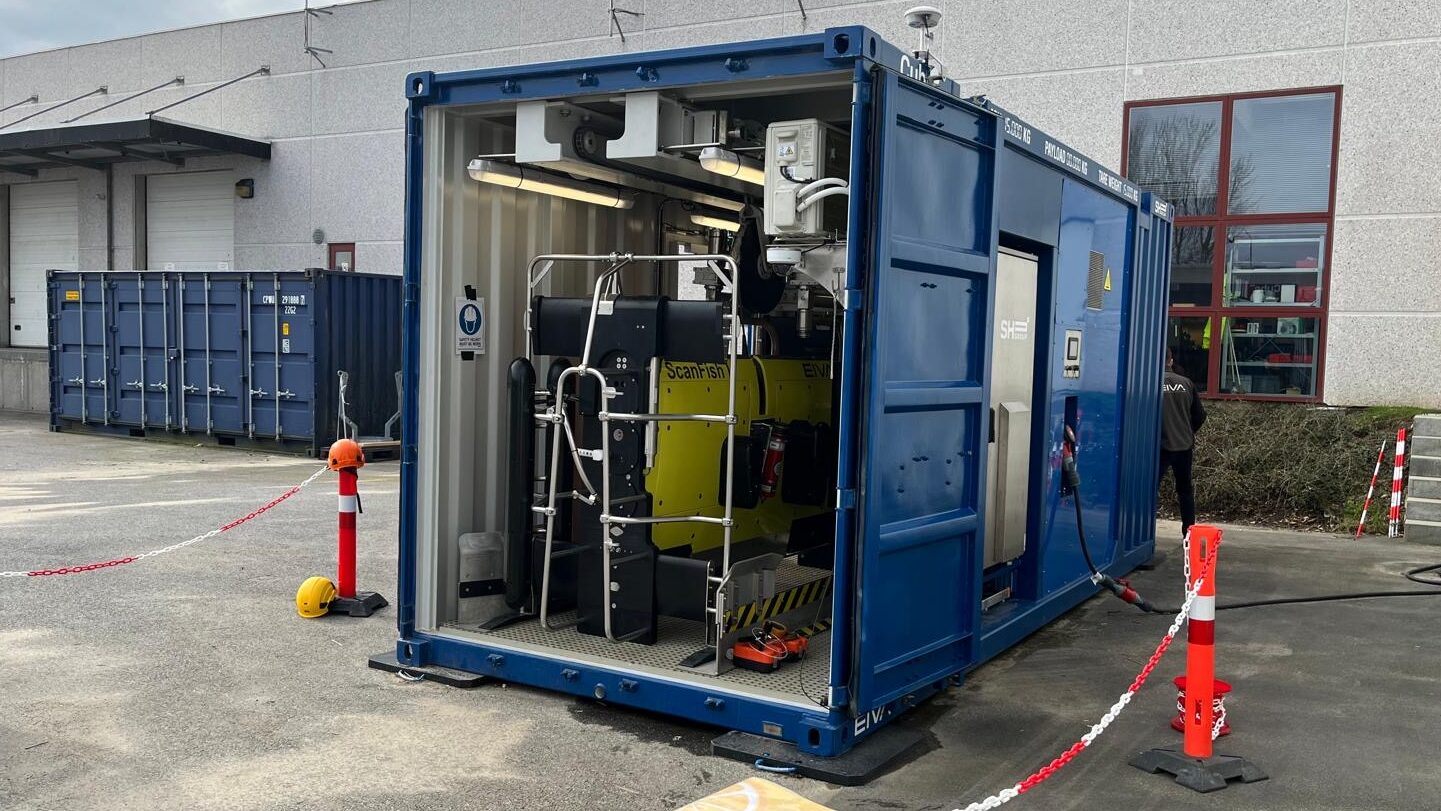
Forcys is excited to announce they have been selected by Ocean Aero as a payload provider for their world-leading autonomous underwater and surface vehicle (AUSV), the Triton.
The Triton is the world’s only environmentally powered AUSV. Completely solar and wind powered, it can travel at speeds of up to 5 knots and can submerge for up to 5 days at 2 knots.
A true multi-domain workhorse, the Triton can be used as a force multiplier for defence operations, offering easy logistics, launch, and recovery while evading detection using autonomous avoidance and deep diving capabilities.
Forcys will be supplying Ocean Aero with SPRINT-Nav Mini, the world’s smallest hybrid acoustic-inertial navigation technology from its technology partner Sonardyne and Solstice, the leading multi-aperture sonar (MAS) for Autonomous Underwater Vehicle (AUV) systems, from its technology partner Wavefront Systems.
Forcys’ General Manager and Head of Global Sales, Dan Zatezalo welcomes their selection: “We are thrilled that Ocean Aero has chosen us as their payload provider for defence applications. Their revolutionary technology is a great complement to our offer, and we think their customers are going to love the results. We look forward to working with them in driving the autonomous ocean defense technology sector forward.”
Bob Marthouse, COO from Ocean Aero said; “A key differentiation in our selection process is the performance to power ratio. We need to maximize the value from our payloads while managing the power consumption to sustain our mission goals. This is where the technology from Forcys makes a significant difference. On our last mission, everyone was highly impressed with the Solstice MAS.” With Forcys’ marine defence market expertise, alongside its access to many technology partners, and Ocean Aero’s many applications for the Triton, the partnership looks set to be a revolutionary and fruitful one.
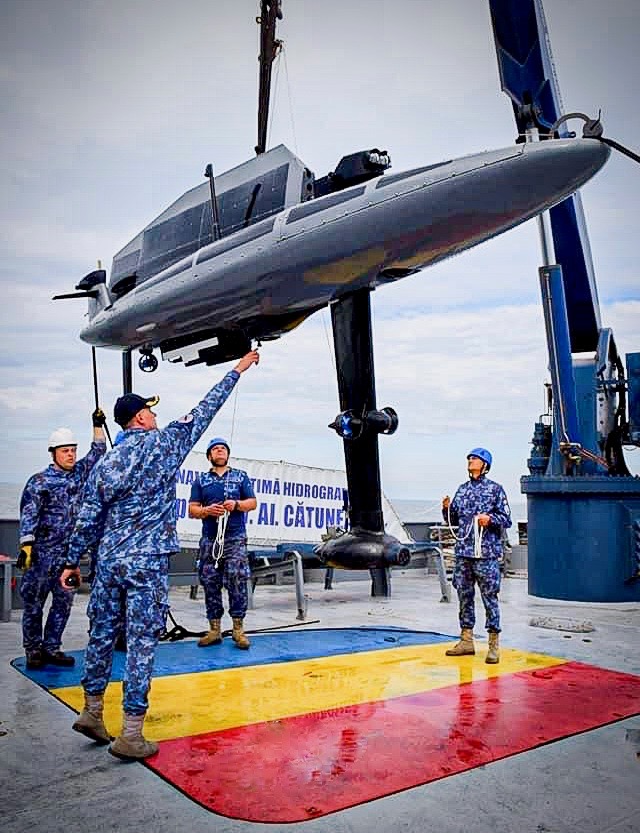
Explosive ordnance, such as mines, pose a significant threat to naval operations, offshore energy projects, and other maritime activities. Traditional methods of disposing of these hazards often put personnel and equipment at risk as they require divers or remotely operated vehicles (ROVs) to approach the ordnance closely and manually initiate the detonation process.
The Initiation Transponder 6 (IT 6) from our technology partner Sonardyne, when integrated with mine neutralisation devices mounted on a VideoRay Mission Specialist Defender underwater robot, provides a remote, autonomous, safe and effective solution for mine clearance operations. This technical collaboration allows for acoustic initiation and detonation from a remote location, eliminating the need for and risks associated with physical proximity to the ordnance.
The integration of the Defender and mine neutralisation devices with the IT 6 represents a significant advancement in the field of explosive ordnance disposal (EOD).
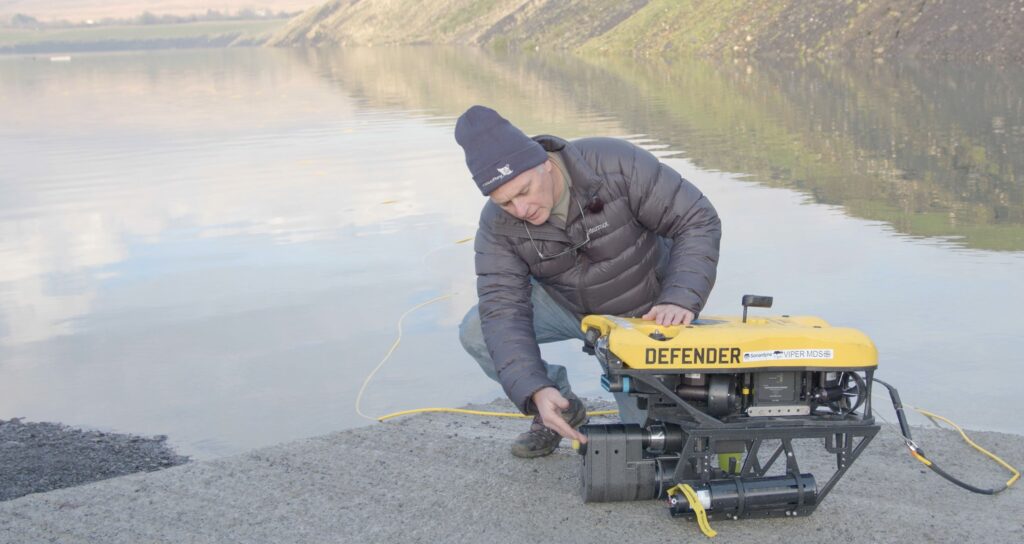
How it works:
- The IT 6 is connected to a non-electric mine neutralisation device, which is deployed near the contact by the Defender.
- Once the neutralisation device is in place, the Defender can be manoeuvred to a safe distance, typically around 1 kilometre away.
- Using Sonardyne’s Wideband 2 digital signal technology, the IT 6 receives an acoustic command to arm the charge from a surface vessel or command centre. A subsequent command then initiates the shock tube and detonates the neutralisation device.
- The entire process can be carried out in most weather conditions and during day or night, enhancing operational flexibility and safety.
Benefits:
- Enhanced safety: By eliminating the need for physical proximity to the contact during detonation, the combination of the IT 6 and Defender significantly reduces the risk to personnel and assets.
- Increased operational efficiency: The autonomous delivery and wireless initiation capability streamlines the process, allowing for faster and more efficient mine clearance operations.
- Versatility: The IT 6 and Defender can be used in various underwater environments, including deep-water operations, making it suitable for a wide range of clearance missions. The underwater robot is designed for more precise control of the vehicle position and orientation, heavier payloads and demanding interventions. With seven thrusters, it can move in any direction and maintain active pitch to face its target in an upward or downward orientation.
- Proven technology: Sonardyne’s Wideband 2 digital signal technology draws on a fifty-year heritage; it is field-proven, ensuring reliable and long-range underwater wireless communication. The Defender draws on VideoRay’s twenty-five years of ROV design experience and is built with power, reliability and flexibility in mind.
- Multi-shot: the IT 6 can be fired multiple times, making deck tests and practice runs affordable. In addition, if a mission is aborted the kit can be safely recovered and reused. The explosive charge and the IT 6 are only sacrificed on confirmed contacts.
- Cost: Once the initial investment has been made for the technology, the cost per deployment is significantly lower than sending personnel on each mission. If multiple ROVs are deployed, they can be controlled from one vessel or control room, thus further reducing costs.
Demonstration
In 2022, the IT 6 and the Defender were demonstrated together for the first time to the UK’s Defence Science and Technology Laboratory (DSTL) and the UAE Navy at a quarry in Wales.
The demonstration included successful detonations of a mine neutralisation device, delivered by the Defender and initiated by the IT 6, from a range of approximately 1 kilometre.
As armed forces around the world move towards more autonomous operations on land, in the air and under the sea, there will be increased demand for the utilisation of existing and the development of new technology.
The benefits in terms of safety, efficiency, adaptability and cost are obvious, not just in mine countermeasures; and the collaboration between market leaders, such as Forcys, Sonardyne and VideoRay, will be at the forefront of driving advances in the technology. Contact us to see how we can help you be there too.
_______________________________
Did you know that another of our technology partners, Voyis, manufacture the market’s technically leading ROV piloting camera? The Discovery camera from Voyis enhances your identification by delivering crisp 4K images of your targets in real-time. The ideal complement to the IT 6 and Defender. Find out more in a blog coming soon…
Discovery is a revolutionary new underwater camera system from Forcys technology partner Voyis that is changing the way we understand the underwater domain. In an interview with Luke Richardson VP for Sales and Marketing at Voyis, we discuss the origins of the Discovery, the challenges faced in its development, and the new optical payloads that are helping to transform our understanding of the underwater world.
Discovery was designed to remove the compromise between piloting and inspection cameras. Traditional underwater robotic systems (ROVs) have separate camera systems for piloting and inspection. Piloting cameras are designed with low latency in mind, which compromises the video and data quality of the camera to ensure the pilot has rapid response time. Whereas, inspection cameras provide high quality optical video and imagery, but are not trusted to provide low latency piloting capabilities, limiting the payload capacity for ROVs, particularly smaller platforms. Discovery Vision Systems consolidate these two functions into a single camera system. This gives operators access to high-quality imaging, low latency video feed, and, in the case of the Stereo variant, real-time depth perception, all from a single camera.
Luke Richardson explains, “New optical payloads are providing us with unprecedented insights into the underwater domain. The Discovery’s camera system, for example, uses a mix of high-quality optics and focus, combined with image enhancements done at the edge to generate actionable subsea datasets in real-time. This allows operators to see and understand the underwater world in a new way. It hasn’t been easy. One of the biggest challenges was developing a camera system that could meet the requirements for an effective subsea navigation and inspection tool, while fitting on a small inspection-class ROVs. Discovery Vision Systems are powered with the latest developments in computing capability to minimize the electronic stack, while still performing advanced corrections essential to deliver a superior inspection camera. In addition to optimizing the electronics to get the most out of the camera internals, the system also utilizes a 130° x 130° domed lens with full 4K resolution and crisp focus to provide platforms with increased situational awareness through piloting operations. Integrating this incredible field of view within the Discovery size limitations required mastery from Voyis’ design team. The development of the Discovery tackled the challenges and as a result the quality and capability of the system met the need of our objective, helping humans see the depths like we see the surface.”
In defence applications cameras have a critical role to play in providing improved situational awareness by helping to identify IEDs and mines, supporting autonomous manipulation tasks and obstacle avoidance.
Advanced optical and processing technology readily accessible
Discovery Vision Systems from Voyis use the Data Distribution Service (DDS) architecture to provide users with access to all the data they need to make informed decisions and perform inspections. DDS is a standard protocol that allows different systems to communicate with each other and share data in a real-time and efficient manner.
“You’d like to know why we would want to use DDS? It means we can provide the user with a number of outputs:
- Piloting feed: A live stills-to-video feed that is compressed for low latency.
- Raw image data set: A set of unprocessed images that can be used for further data refinement or inputs to customer proprietary enhancements.
- Processed image data set: A set of images that have been light levelled, undistorted, and colour corrected, optimal inputs for automatic target recognition software.
- Inspection video: A stills-to-video feed to re-live the survey to uncover more details after mission.
- 3D point cloud depth map (Stereo camera): 3D depth perception, mapping the environment to support autonomous manipulation, visual station keeping or docking, and tracking.
Users can simply subscribe to any of these data streams and receive them in real time. This allows users to create 3D models, make decisions, and perform inspections quickly and efficiently.”
Discovery Vision Systems are compliant with the Unmanned Maritime Autonomy Architecture (UMAA) framework, which is used by the US Navy. This means that the system can be easily integrated with other systems that use the UMAA framework. This makes it easy for users to deploy the Discovery Vision System on their own platforms and start using it immediately.
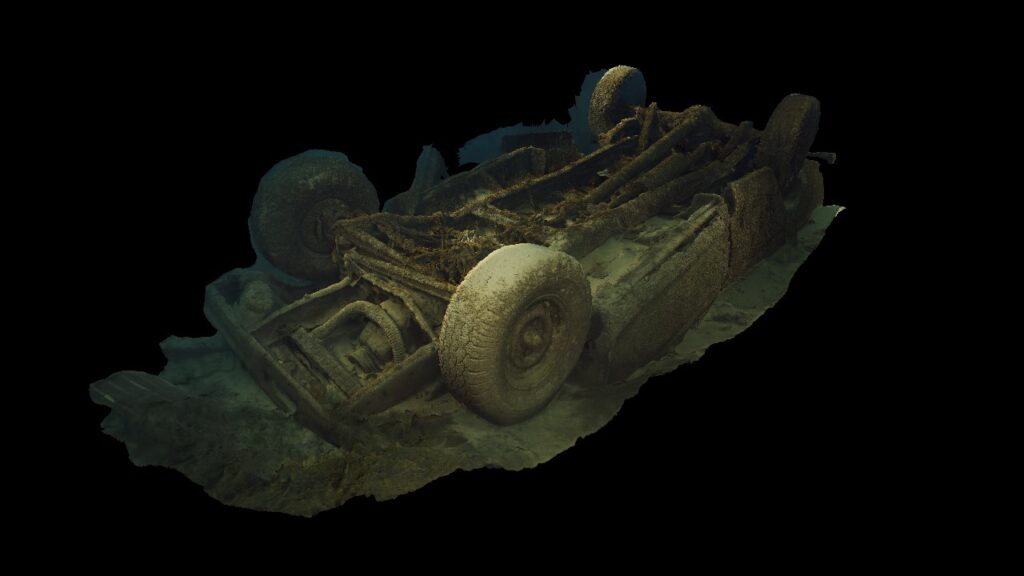
It’s child’s play
“You can’t underestimate the amount of effort that has gone into making the Discovery camera as simple to use as possible. We considered typical survey operations, and wanted to ensure that operators could maintain their general piloting missions without changing tasks or adding additional steps, but also wanted to ensure that the mission would gain a large advantage with the actionable datasets generated in real-time. I am happy to say that we have managed to do that. Discovery is a technical marvel, improving user experience and delivering outputs that are immediately accessible to any user.”
The technical innovations required to make this vision system work are numerous:
- Global shutter: Discovery uses a global shutter, which means that all pixels in the image are captured at the same time. This is important for maritime autonomy applications because it eliminates motion blur and distortion.
- High dynamic range: Discovery has a high dynamic range, which means that it can resolve features in the images with greater detail, whether the target is in very bright or very dark environments. This feature improves identification capabilities.
- 130° by 130° Dome: Discovery has a 130° by 130° Dome that provides very crisp imagery and colours with complete wide-area coverage delivering better situational awareness when performing piloting task or autonomous obstacle avoidance operations.
- High-powered lighting package: Discovery comes with a high-powered lighting package that includes two Nova Minis at 75,000 lumen each allowing the camera to operate in low-light conditions.
Why invest on your camera system?
“The camera is the most important sensor on an ROV. It is what allows you to see underwater without deploying a person. So why would you compromise and only rely on a low-latency camera with limited optimization for subsea environments? If you build the ROV to provide “eyes” in subsea environment for humans ashore, why would you compromise on the camera?,” Luke asks. “In a sense, customers should consider the camera they need to perform their operation before the platform, it is the sensors that enable humans to interpret the subsea domain, the ROV is simply the vessel to transport them.”
If you would like to find out more about Discovery or Voyis other optical systems, please contact us.
In the final installment of the DiveTrack series of blogs, retired Royal Navy Cdr Justin Hains MBE focuses on safety and future use cases. If you want to learn more about our technology partner Sonardyne‘s latest product remember to get in touch with our team.
If you haven’t yet read the previous blog articles in the series then follow this link.
An extra layer of safety
Divers are very well trained, but humans make mistakes. Errors made in diving can have fatal consequences. With DiveTrack the supervisor is an extra layer of diving safety: they receive the alarms the diving set generates at the same time as the diver, they can see cylinder contents nearing minimum safe levels or in the case of rebreathers, if the gas the diver is breathing is unsafe. The supervisor can either change the plan or abort the dive before the situation becomes life-threatening. DiveTrack provides an additional layer to the equipment safety case and to the risk mitigation in place for the dive.
The ability to send automated and pre-formatted messages to and from the dive computer caps the safety enhancements delivered by DiveTrack. The basics include “Diver well” and “Reached target” while emergency calls include “I need assistance”, which provides a direction and range to all other divers on the net. The potential of the data transmission is only limited by the sensor routed to the computer: equipment parameters (gas compositions and CO2 scrubber monitoring) and biometrics (heart rate, respiration rate, core temperature) are all possible now if required by the customer.
Future proof
The DiveTrack system has capacity for future upgrades. The system is running at a fraction of its maximum capacity. This makes DiveTrack a safe choice for customers who are investigating biometric monitoring, experimental diving, performance enhancement and operational advantage or even for the key requirement of all diving equipment: safety.
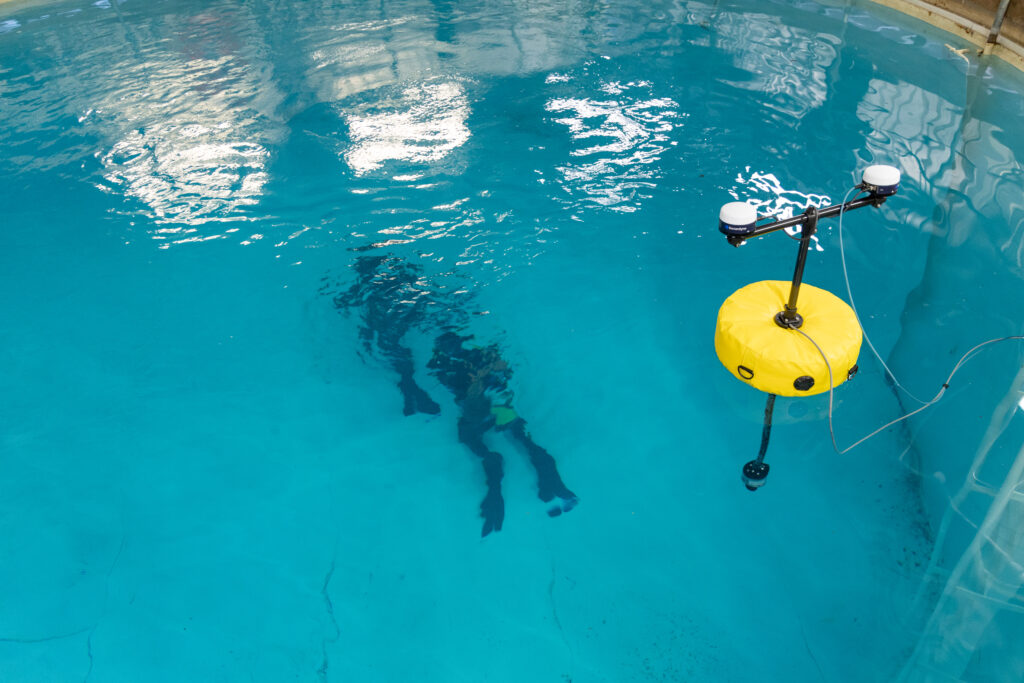
DiveTrack is what I needed off Portland all those years ago. It enhances resilience and safety. The mission is more likely to succeed. This is proven technology adapted to a diving requirement from our Technology Partner Sonardyne: acknowledged and trusted experts in underwater acoustic tracking and communications. It has ample headroom for additional data exchange requirements in future. It is compact, neutrally buoyant in sea water, easy to use and reliable. It has been successfully integrated and demonstrated with closed circuit rebreathers and open circuit equipment.
Contact us today to discuss your requirements.
Forcys brings together leading technologies, offering a comprehensive naval and subsea capability to the Australian defence market
Evolving threats, unlawful maritime claims, military coercion, all these factors are destabilising the Asia Pacific region and causing many lawful states to reconsider their defence strategies. Australia’s 2020 Defence Strategic Update and the anticipated March 2023 release of Australia’s Defence Strategic Review has brought these issues into sharp focus while demanding growing self-reliance for delivering deterrent effects. Today’s launch of Forcys Australia and the appointment of Sean Leydon as Regional Manager for Asia Pacific, is in direct support to this strategic need.
Backed by over fifty years of experience, Forcys offers the global maritime defence sector, remote, autonomous and networked control capabilities that deliver integrated situational awareness to customers in the underwater domain.
Covering a range of maritime operations including asset protection, littoral strike, mine warfare, submarine rescue, and submarine and anti-submarine warfare, Forcys seeks to transform the underwater domain by enabling increasingly distributed and automated operations. This is made possible by integrating and bringing to market world-changing solutions from leading technology partners Chelsea Technologies, EIVA, Sonardyne, Voyis and Wavefront Systems.
Commenting on the Australia launch, Ioseba Tena, Commercial Director of Forcys, said: ‘I am excited, Australia is taking bold decisions in the underwater domain. There’s been a realisation that uncrewed systems take a lot of the risk out of the conflict, they afford higher levels of attrition and deliver higher coverage rates. The sense of urgency is palpable and there is an appetite to work with industry experts to support the transition. We are keen to support a sovereign, sustainable capability.’
Sean Leydon, Regional Manager for Forcys’ Asia Pacific region, explains: ‘Our technology partners already engage with the Australian Government and industry, so our initial focus will be on improving those interactions by providing an in-country presence. However, our ambition doesn’t stop there, we are actively recruiting engineers to help support our existing customers and in time to develop sovereign capability. I’m looking forward to help make a difference.’ Forcys is exhibiting at the NAVDEX exhibition in the United Arab Emirates between 20th and 24th February 2023 at stand A-029. If you’d like to arrange a meeting with the Forcys team, please get in touch.
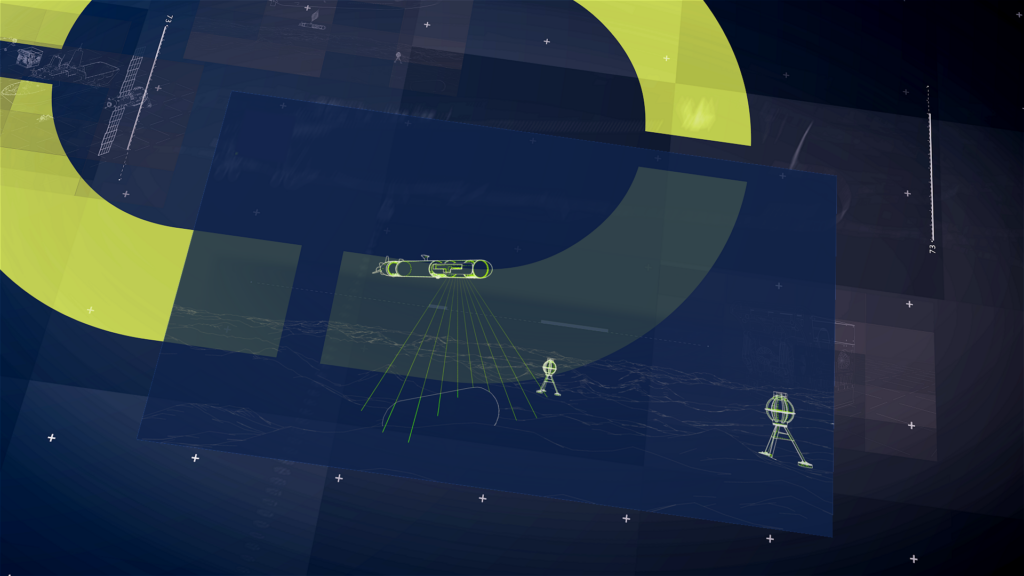
In Brief
In this project, the University of Tasmania evaluated the capabilities of optical-based sensors when using an AUV (Autonomous Underwater Vehicle) to dynamically survey large areas and identify specific objects of interest within environments. Based on the performance of the systems and the overall process, recommendations will be made to Defence Science and Technology for using this technique when trying to identify a mine-like object (MLO) underwater.
The challenge
Wide-area sensors, like sonar, can be used for mine detection, but don’t always offer enough details for the identification stage. Meaning that historically, underwater mine identification has been done by deploying divers or remotely operated vehicles.
The solution
Our technology partner, Voyis, develop high-resolution optical systems capable of rendering laser point cloud data and capturing 4k stills images. These provide a complete visual understanding of mine-like objects (MLOs), improving mission lethality, and reducing risk by limiting diver deployments in the minefield.
The Insight Pro laser scanner, the stills camera Observer Pro, and the Nova LED panel were bottom mounted in the University of Tasmania’s ISE Explorer AUV . All data was collected and saved to the onboard storage of the sensors; image data was processed in real-time. The AUV travelled at an altitude between 1.5-15m while the laser and stills system collected data, operating harmoniously to ensure laser and stills data sets of the same targets were collected.
The result
Voyis sensors were easily integrated into the Explorer AUV and generated crisp 4K images. The data collected provided enough details for the easy identification of objects, allowing users to distinguish between mines and similar objects found underwater.
The crisp stills images are enhanced in real time, for complete situational awareness in warfare operations. Images are corrected to remove all aspects of the water medium – colour, lighting, and distortions. The results provide a significant improvement in relation to conventional optical systems typically mounted on AUVs. From now AUVs can potentially be used to build wide area high-resolution maps of the subsea environment.
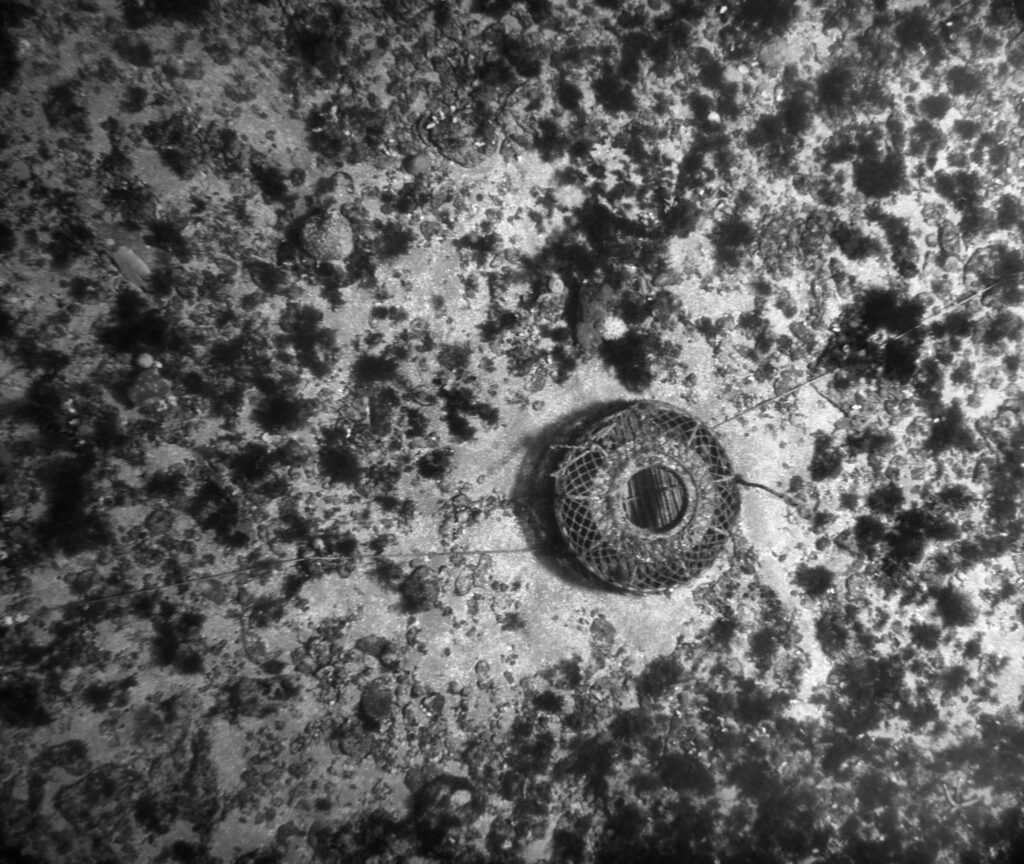
Contact us if you would like to reach out to our experts.
In brief
Just because your expeditionary forces operate small Autonomous underwater vehicle (AUV) systems, it doesn’t mean they should not be ambitious as to which payloads to carry. When deploying from a Rhib or other confined spaces, then low-logistic one-person operated instruments are a necessity. This requirement has seen the proliferation of small AUVs. In January of 2022 a number of this units manufactured by OceanScan-MST were delivered to Denmark’s Frederikshavn naval base. Though the AUVs are small, their payload requirements weren’t.
The challenge
The customer wanted to equip these AUVs with the latest generation of 4K digital stills cameras and 3D lasers. Fitting the equipment to an AUV already packed with sonar payloads and other navigation instruments is challenging. Fortunately our technology partner Voyis and their next generation optical systems were at hand. They had to work closely with OceanScan-MST to understand the constrains and develop the right mechanical design to integrate the popular Recon LS System.
The solution
The solution was to develop an OEM version of the Recon LS where each of the components was delivered and carefully integrated to the AUV. The integration to the platform is of paramount importance as the product has been very carefully designed to optimally illuminate the scene.
The result
The Light Autonomous Underwater Vehicle (LAUV) supplied by OceanScan-MST were equipped with an identification capability enabling each of the AUVs to search for contacts with the combined sonar and laser pair and enabling re-acquisition with the same AUV. This means improved probability of detections, increased area-coverage-rates and mission tempo and imaging with an amazing fidelity to support other missions beyond mine countermeasures.
If you would like to know how Forcys and its technology partners can support your expeditionary needs please do not hesitate to get in touch.
